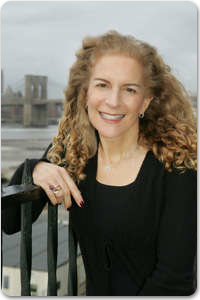
“Any More Earths Out There?”
Highlights For Children, October 2012
How do you find alien life? Dr. David Charbonneau discusses the Kepler Space Mission and his method for detecting planets beyond our solar system.

“It’s True! Time Flies When You’re Having Fun and a Watched Pot Never Boils,” and “Five Minutes With Dr. Time”
ODYSSEY, September 2012
Do you want vacations and weekends to last longer? Then have lots of fun, says neuroscientist Dr. David Eagleman, who studies time perception and the brain.

“Gregory E. Chamitoff: Living in Space”
Highlights For Children, August 2010
Is there a steering wheel in the International Space Station? Second graders ask astronaut Dr. Gregory Chamitoff questions about living in outer space.

“Planet Hunter”
Highlights For Children, November 2003
Finding a new planet is like Columbus finding America—only better. New planets are entire worlds, says Dr. Geoffrey Marcy, as he explains his method for detecting planets that orbit stars beyond our Sun.

“Robert Louis Stevenson: Samoan Hero”
FACES, May 2002
Renowned author Robert Louis Stevenson embarked on a wild adventure in Samoa, where his writings about the native Samoans awakened the world to the people’s political plight.

“An Ocean on Europa?”
Highlights For Children, September 2000
Is alien life hiding beneath an ice-covered ocean on Jupiter’s moon, Europa? Scientists explain why Europa’s ocean may be home to microscopic life.

“Anne of Green Gables: The World’s Favorite Redhead”
FACES, November 1999
Winner of a Magazine Merit Honor Certificate from the Society of Children’s Book Writers & Illustrators
Why do thousands of visitors from around the world flock to Green Gables, the book character Anne’s fictional home on Prince Edward Island? Many of Anne’s fans are inspired by her spirited and independent ways.

“Dr. Alastair Glass—Laser Visionary”
ODYSSEY, May 1999
How do lasers help speed up our computer communications and create better quality and higher resolution TVs? According to Dr. Alastair Glass, lasers play an integral part in the development of fiber optic cable—the thin strands of glass that transmit information across the globe.

“Finding the Moon’s ‘Gold’”
ODYSSEY, April 1999
A search for water beyond Earth might end in our planet’s own backyard—the Moon. Scientists discuss how the discovery of water ice on the Moon might make it possible for scientists to live there and launch rockets for exploring faraway worlds.

“Microbes on Mars?”
Highlights For Children, February 1999
Reprinted in Best of the Children’s Market: A Collection of Over 80 Articles and Stories Published by leading Children’s Magazines (2000).
Where can scientists find clues to how life might inhabit worlds beyond Earth, particularly on Mars? Astrobiologist Chris McKay dives below the frozen ice in Antarctica to study life that thrives in this harsh climate.

“Driving on Mars”
Highlights For Children, December 1998
Is it possible to drive on Mars? Yes, thanks to computer-software programmer Brian Cooper, who designed the program that enabled Sojourner, the first rover (about the size of a small toy wagon) to explore the surface of Mars.

“Dr. Shannon Lucid: Space Pioneer”
Highlights For Children, January 1998
What happens to the human body in space? Astronaut Shannon Lucid lived on board the Russian space station Mir for six months, and set an American and women’s record for the longest stay in space. She discusses what she did to remain healthy and fit, her research, and how she kept in contact with family and friends.







